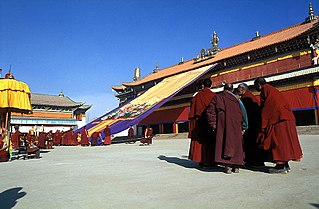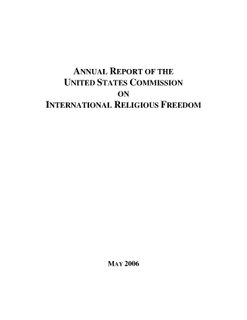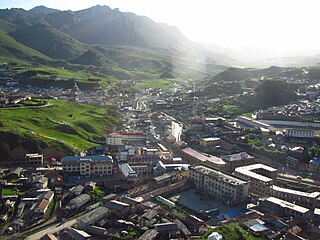Notes
- ↑ Edward Wong (June 2, 2012). "In Occupied Tibetan Monastery, a Reason for Fiery Deaths". The New York Times. Retrieved June 3, 2012.
| This Tibet-related article is a stub. You can help Wikipedia by expanding it. |
Tapey is a young Tibetan monk from Kirti Monastery. His attempted self-immolation on February 27, 2009, in the marketplace in Ngawa Town, Ngawa County, Sichuan, marked the beginning of a wave of Tibetan self-immolations. [1]
| This Tibet-related article is a stub. You can help Wikipedia by expanding it. |
Self-immolation is the act of killing oneself, typically for political or religious reasons, particularly by burning. It is often used as an extreme form of protest or in acts of martyrdom. It has a centuries-long recognition as the most extreme form of protest possible by humankind.

Ngawa or Aba town is the seat of Ngawa (Aba) County, within the Ngawa (Aba) Tibetan and Qiang Autonomous Prefecture in northwestern Sichuan, China. It is located on the Tibetan plateau at an elevation of 3,200 metres. The city is about 75 km from Jigdril, 254 km from Barkham (Ma'erkang) and 157 km from Mewa (Hongyuan).

Ngawa Tibetan and Qiang Autonomous Prefecture, also known as Aba, is an autonomous prefecture of northwestern Sichuan, bordering Gansu to the north and northeast and Qinghai to the northwest. Its seat is in Barkam, and it has an area of 83,201 km2 (32,124 sq mi). The population was 919,987 in late 2013.
This is a list of topics related to Tibet.

The March 2008 Tibetan unrest was a series of protests and demonstrations against the Chinese government's persecution of Tibetans. The scheduled 2008 Olympic Games in Beijing was a rallying point before 2008, and protests in the Tibetan capital of Lhasa by monks on 10 March is credited with beginning the movement. Numerous peaceful protests and demonstrations were held to commemorate the 49th anniversary of the 1959 Tibetan Uprising Day, when the 14th Dalai Lama escaped from Tibet. The demonstrations in Lhasa by monks, nuns and non-monastic Tibetans were met on 14 March, Buddha Day, and afterwards with electric prods, tear gas canisters, and indiscriminate shootings, according to a report by Human Rights Watch on the excessive use of force by Chinese forces. The protests and demonstrations spread spontaneously to a number of monasteries and through the Tibetan plateau, including into counties located outside the designated Tibet Autonomous Region. The Chinese police and military units' excessive use force likewise spread, and the arrest of monks at Labrang Monastery caused more clashes. International protests of support were also held in major cities, and at Olympic events.

Jinchuan County is a county in the northwest of Sichuan Province, China. It is under the administration of the Ngawa Tibetan and Qiang Autonomous Prefecture. The seat of county is Jinchuan Town (Rabden). Prior to the 18th century, the county was ruled by the Tibetan Chiefdom of Chuchen. Jinchuan is known in China for its violent 18th century uprisings that were suppressed by the Qing dynasty.

Ngawa County, or Aba or Ngaba, is a county in the northwest of Sichuan Province, China. It is under the administration of the Ngawa Tibetan and Qiang Autonomous Prefecture. It is located in the remote northwestern part of the prefecture, on the border with Qinghai and Gansu. The county seat is Ngawa Town.

Sêrtar County or Serthar County is a county in the northwest of Sichuan Province, China, bordering Qinghai province to the north. It is one of the 18 counties under the administration of the Garzê Tibetan Autonomous Prefecture, covering some 9340 square kilometres. Sêrtar, which means "golden freedom" in Tibetan, lies in the southeast of the Tibetan Plateau and in the historical region of Kham. The vast majority of the population is Tibetan, followed by Han Chinese.

Garzê or Gānzī, is a town and county seat in Garzê County, Garzê Tibetan Autonomous Prefecture in western Sichuan Province, China. Despite Garzê Prefecture being named after the town, the prefecture capital is actually Kangding, 365 km to the southeast. As of 2010, Garzê was home to 16,920 inhabitants. Garzê is an ethnic Tibetan township and is located in the historical Tibetan region of Kham. It contains the 15th century Kandze Monastery, home to over 500 Gelugpa monks.

The Phuntsog self-immolation incident occurred when a Tibetan Buddhist monk by the name of Rigzin Phuntsog self-immolated on March 16, 2011 in Ngawa County, Ngawa Tibetan and Qiang Autonomous Prefecture, Sichuan province, People's Republic of China. This was followed by another self-immolation incident on September 26, 2011. By March 2012, more than thirty other Tibetans had self-immolated as a protest against Chinese rule of Tibet.

Kirti Gompa, is a Tibetan Buddhist monastery founded in 1472 and located in Ngawa, Sichuan province in China, known as Kham. Numerous other associated Kirti monasteries and nunneries are located nearby. As of March 2011, the Kirti Gompa was said to house 2,500 monks. Between 2008 and 2011, mass arrests and patriotic re-education programs by Chinese authorities have targeted the monks, reducing the population substantially to 600 monks. The wave of Tibetan self-immolations began at Kirti Gompa.

Setenling Gompa, Ser Gompa, is a Jonangpa monastery about a kilometre from the eastern edge of Aba or Ngawa City, the main city in Ngawa (Aba) County, within the Ngawa (Aba) Tibetan and Qiang Autonomous Prefecture in northwestern Sichuan, China. It is located on the Tibetan plateau at an elevation of 3,200 metres (10,499 ft.). The head lama, Thubten Dorje Rinpoche, is still living in the monastery.

Protests and uprisings in Tibet against the government of the People's Republic of China have occurred since 1950, and include the 1959 uprising, the 2008 uprising, and the subsequent self-immolation protests.

As of July 2020, 156 monks, nuns, and ordinary people self-immolated in Tibet since 27 February 2009, when Tapey, a young monk from Kirti Monastery, set himself on fire in the marketplace in Ngawa City, Ngawa County, Sichuan. According to the International Campaign for Tibet (ICT), "Chinese police have beaten, shot, isolated, and disappeared self-immolators who survived."

Chen Quanguo is a Chinese politician and current Communist Party Secretary of Xinjiang Uyghur Autonomous Region and a member of the 19th Politburo of the Communist Party of China. Most recently, he was the Communist Party Secretary of Tibet Autonomous Region. Originally from Henan province, Chen was among the first batch of students to graduate university after the resumption of Gaokao examinations in 1978.

Tibet on Fire: Self-Immolations Against Chinese Rule is a book by Tsering Woeser, published by Verso Books in 2016. The book is a contemporary if not painful introspective look at a major social and human rights problem caused by the forced integration of Tibetan and Chinese societies, and due to empirically repressive policies of the Chinese (PRC) government.

Langmusi Town is a small alpine town on the eastern edge of the Tibetan Plateau, nestled in a valley shared between Gansu and Sichuan provinces in China and straddled by two large monastery complexes. Administratively, the town is part of Luqu County in Gannan Tibetan Autonomous Prefecture in Gansu, although a small portion of the town in the south is actually located in Zoigê County, Ngawa Tibetan and Qiang Autonomous Prefecture, Sichuan. The town is commonly visited by tourists making the overland trip between Sichuan and Gansu. Inhabitants of the town are primarily Tibetan.

Antireligious campaigns in China refer to the Chinese Communist Party's official promotion of state atheism, coupled with its persecution of people with spiritual or religious beliefs, in the People's Republic of China. Antireligious campaigns began in 1949, after the Chinese Communist Revolution, and continue today in Buddhist, Christian, Muslim, and other religious communities. State campaigns against religion have escalated since Xi Jinping became General Secretary of the Chinese Communist Party. For Christians, government decrees have mandated the destruction of houses of worship, such as Christian churches. In Tibet, similar decrees have mandated the destruction of Tibetan Buddhist monastic centers, of sacred Buddhist sites, of monastic residences, the denial of the Tibetan people's right to freely access their cultural heritage, and resulted in the ongoing persecution of high Buddhist lamas and of Buddhist nuns and monks. Reports of forced reeducation camps, arrests, beatings, rape, and destruction of religious sites in Tibet are likewise being made with regard to the Uyghur people, who are also allegedly being subjected to an ongoing cultural genocide.
Tsem Tulku Rinpoche was a recognised tulku of Kalmyk descent, an incarnate lama of the Gelug school of Tibetan Buddhism, and the founder and spiritual guide of Kechara House Buddhist Association with its headquarters in Malaysia.